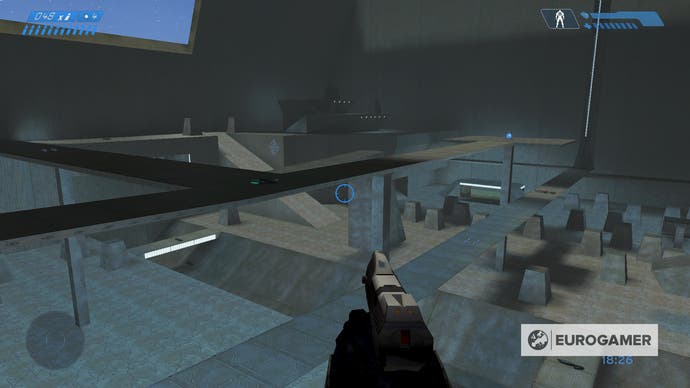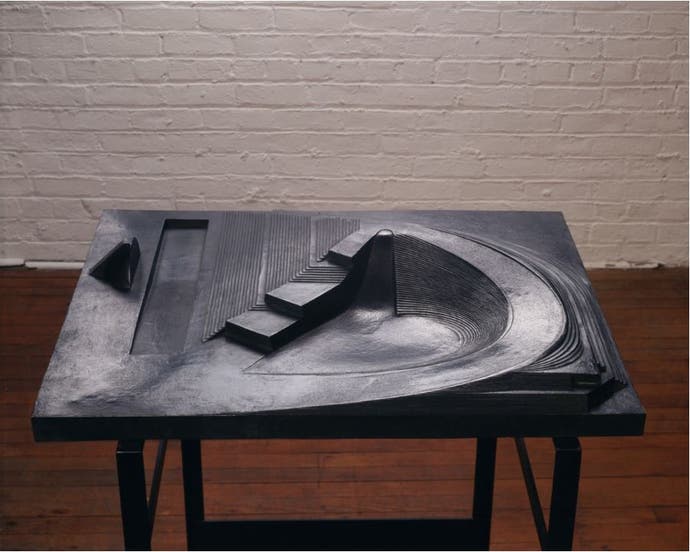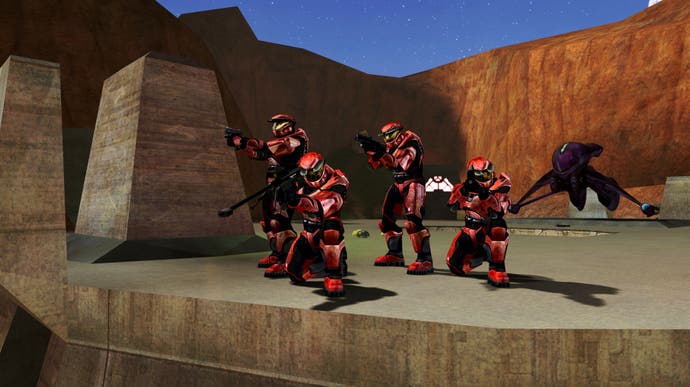Up Close: multiplayer Halo's playground genius
Running rings.
Up Close is a new, occasional and informal series here on Eurogamer, looking at the smaller points in games in greater amounts of depth. Covering anything from a single mechanic to a reoccurring theme, in praise or criticism, the aim is simply to look a little closer at the things that deserve our attention. Here's the previous entry: The supreme realism of Lonely Mountains: Downhill and A Short Hike.
Multiplayer Halo, at its best, reminds me of being a kid in a playground. I think a lot of games would hope for that - playgrounds are often seen as big open spaces, sandboxes, where you can hop off the rails of the story for a bit and doodle about the wider world. But I'm thinking a bit more literally here. Multiplayer Halo is like being in an actual playground, because the best Halo maps follow the same rules on which the best playgrounds are built.
I was reminded of this by Dawn of War 3, of all things, which is a game that strips away the innate flexibility of traditional RTS maps in place of three lanes with specific objectives. In doing so - despite, I maintain, still being quite fun in its own right - it killed the thing that made that genre great. Real-time strategy is about breadth as much as depth, space for invention and flexibility. Wide maps and huge suites of tools for you to use in hyper-specific ways. It's a massive shame, but it's not a problem unique to the RTS, as much as some might think. Which brings me back to Halo. Just as I was thinking about the shift from more open RTS maps to the more conceptually closed, I caught this incredible bit of (now months-old) footage from someone playing a the Master Chief Collection:
Magic. That's on Halo Reach's Pinnacle, which is a banger in its own right and also serves as a decent illustration of what I'm on about. Pinnacle is a castle. Out of a pile of indistinguishable forge-world panels rises a tower, with views across the walls and keeps of the map and a choke point of a ramp leading up to its peak. It's king of the hill, but baked into the landscape, instead of the explicit rules. The onrushing hoards are picked off, near and far and scurrying about in the tunnels below, up the stairs to the final chamber, the last man standing fending them off with whatever he has to hand. It's a basic map, uninspiring to look at, all metal blue-grey and generic rocky green, and, on the surface, kind of unexciting to even think about. But it's a classic, because out of its simple shapes your mind builds a kingdom.
It's also not even the best example in Halo, which is, of course, the incomparable Blood Gulch (and its reincarnations, Coagulation and Hemorrhage). Two bases, one mostly symmetrical canyon to contain them, and some toys to play with that help break it up. Crucially, though, the map isn't perfectly symmetrical. You get the same toys to play with - the same weapons, vehicles, teleporters and the like - which keeps things even and fair, but the map is not identical from whichever way you face it. It's fair, but it's not balanced - on purpose. It's got little things to play with, little bumps and shortcuts and half-features. Tunnels down either side, undulating, sight-breaking hills in the middle, but just twisted a little, gently wrung, to the point they're not perfectly in line.

No playground that I remember was ever perfectly symmetrical and flat. There's always something, somewhere, that you'd use to spring you off into imagination. My school's one was mostly even but had a little extra bit in one corner, for instance: a little square poking out like a flag from a pole, about the size of a small classroom. That section had two benches in it, cemented into the ground, with a just-about-person-sized gap in between. And so that section, as opposed to the goal painted on the wall, or the hopscotch bit on the ground, or even the flashy "adventure playground" that got built later on, was our favourite. The benches and their little gap in between became a breached wall. They became the bottleneck to defend against some onrushing hoards. Or the mountaintops for king of the hill. Or the safe ground, with the gravel around them lava. The area itself was 90 percent flat, but it was just the little sprinkling of structure, barely a hint of it, that gave us something to use and make our own. It's simplicity, the broadness of its geometry, burning every inch of its gravel and mortar into long-term memory.
Someone actually thought about doing this on purpose. Isamu Noguchi, a Japanese designer who originally specialised in nice tables and sculptures, turned his hand to sculpting playgrounds in later life, with the goal of inspiring children to be more "imaginative" adults. That was probably a bit ambitious but the result was a series of remarkable sculptures that, weirdly enough, remind me again of Halo. They're cyclical, and recursive, as if following the natural flow of them would lead you back to where you started. As if you actually want to follow their flow, crashing around and over it like water. But they're still fundamentally, crucially, uncomplex. And again: there's no structured, intentional "play area", or a specific goal for what people should be doing with a particular space. These places are writable. Just a series of nudges and inspirations - literal jumping-off points, for body and mind.

I'm pretty sure those two benches in my playground weren't put there out of reverence for Noguchi, but I still like to think of Blood Gulch's two opposing bases as being similar to them in kind. And the little touches of texture in that map, those side tunnels and those sight-breaking hills, just more delicate brushes with purposeful imbalance. Every bit of a good Halo map, right down to the placement of a sniper rifle or where exactly you're dropped by the teleporter, feels like just the faintest nudge. Follow the tunnels down the side of Blood Gulch, or weave through the strange, abstract obelisks of Hang 'Em High, and hopefully you'll see what I mean. Blank canvases, yes, but with just a line or two, here or there, for you to spin off from and make your own. There are plenty of other games that do this - classic shooters especially, like Quake and Unreal Tournament - and many genres too, like the best examples of the RTS. In fact, the simplicity necessitated of older generations almost implies this kind of design right off the bat. But classic Halo's multiplayer seems to stand above. It feels singularly pure, even in its modern forge worlds like Pinnacle, and above all it feels like being back at school, with its Play Mountains and its palaces of imagination, because it respects you enough to strip it all back and let you find your own fun.

